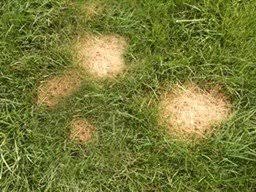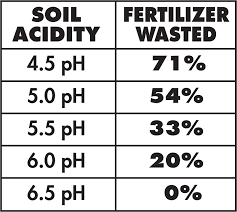Dog Pee Killing Grass

 As long as they don’t endanger the dog or the lawn, home remedies are worth a try, but what is burning the grass is not exactly ‘acidity’ or ‘ammonia’ (as such) but excess nitrogen.
As long as they don’t endanger the dog or the lawn, home remedies are worth a try, but what is burning the grass is not exactly ‘acidity’ or ‘ammonia’ (as such) but excess nitrogen.
This is more concentrated for female dogs because they don’t spread their urine by marking, like males do, but typically deposit a bladder-full of pee in a single dump in the middle of the lawn.
So one day, some horticulturists at a land-grant (Ag Department) did some “for real” testing. The results were mixed with nothing being a “runaway success”:
– They found that commercial ‘pet’ tablets do nothing
– They found that commercial ‘pet’ liquids do nothing
| The above pH meter can tell you how far from “frail” your yard is to handle dog pee. Buy it via this link and I get ten cents. Yay! |
– It turns out that oral dilution of the dog’s urine with more water or water in/on the food sometimes works, which is why ‘liquid remedies’ sometimes seem to work. More liquid in the dogs diet dilutes the urine and encourages multiple eliminations, spreading the nitrogen (the true ‘burning agent.’)
So, you can try adding water to dry food or using some canned food to encourage liquid intake. That worked to some extent too. The wisdom and feasability of creating consistent polyuria (high urine output) at all times is unrealistic however.
– Over watering works, but only within a few hours following the spotting, after which watering can actually hurt. So the ‘chase the dog down and water the spot with a watering-can’ aficionados are correct.
– Things like tomato juice in the food or water bowl merely add water and salt to the diet of the dog. The acidity does nothing, as it isn’t the acidity burning the lawn anyway, but nitrogen.
– Grass varies in its sensitivity: Bluegrass and Bermuda grass are easily killed by this (as they are by over fertilizing), Fescue is better
– Switching to a lower-protein diet can help, as the protein is what is eventually converted to nitrogen, but a certain amount of nitrogen occurs in the pee no matter what and you shouldn’t risk the dog’s health to spare the lawn. Don’t reduce protein for pups, gestating females or special diet dogs or hard-working dogs. These dogs need that extra protein. And lawn isn’t worth it!
  |
| You can see from the above that as the pH nears neutral, the grass can properly metabolize most of the nitrogen it gets. As the pH in the soil waxes low, so is it’s ability to cope with mass-nitrogen dumps. |
Some data suggests that lightly liming the grass twice a season can confer some resistance to acid / nitrogen burns. A “grass guy” or lawn professional could advise on liming rates.
There are two schools of thought on why liming / bone meal prevents yellow stains in the yard:
First, urine / urea are low in pH and in some cases become “uric acid” in the yard. If the pH of the soil is already acidic, this can have a deleterious effect on the grass.
Secondly, adding Lime (Calcium Carbonate) and Bone Meal (High in Phosphorus) to the lawn, the grass is almost exponentially better equipped to use / metabolize high levels of urea nitrogen. So you’re supporting the soil alkalinity AND potentiating the grass’s efficient use of the excess nitrogen fuel it’s getting.
 The most consistent of the anecdotalremarks made about dog pee stains is that liming / bone meal in the yard go a long way towards preventing yellowing whether it’s because of a support of the soil pH from dropping below six, or providing the grass enough Phosphorus/K to use that much nitrogen at once.
The most consistent of the anecdotalremarks made about dog pee stains is that liming / bone meal in the yard go a long way towards preventing yellowing whether it’s because of a support of the soil pH from dropping below six, or providing the grass enough Phosphorus/K to use that much nitrogen at once.
As the pH in the soil waxes low, so is it’s ability to cope with mass-nitrogen dumps.
– Best solution; pick a spot, set it up with a durable substrate and train the dog to go there.





